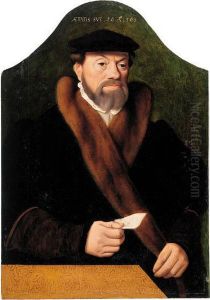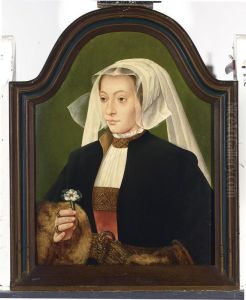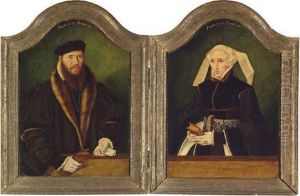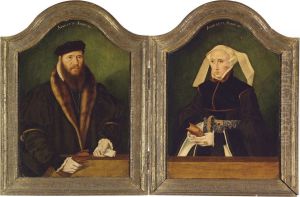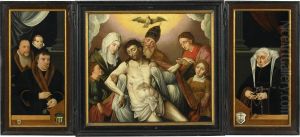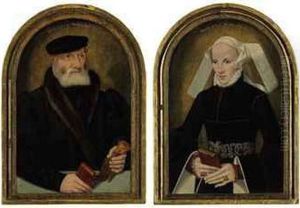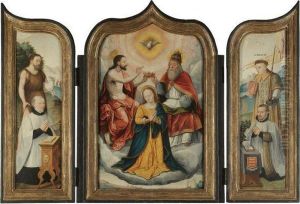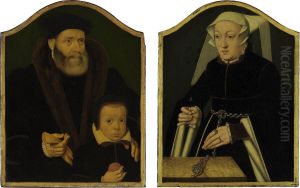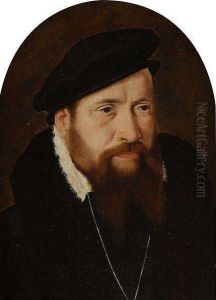Bartholomaeus Ii Bruyn Paintings
Bartholomaeus Bruyn the Elder, born in 1493 in Cologne, was a significant German painter of the Northern Renaissance, predominantly known for his portraits and religious compositions. His work is characterized by its meticulous detail, vibrant colors, and the psychological depth he brought to his portraits, which made him a sought-after portraitist among the nobility and the burgeoning middle class of his time.
Bruyn was apprenticed to the painter Jan Joest of Kalkar around 1505, which laid the foundation for his artistic education. By 1515, he had established himself in Cologne, where he became a leading figure in the city's artistic community. He was not only a talented painter but also a shrewd businessman, running a large workshop that produced altarpieces, portraits, and polychrome sculptures, indicating his versatility and adaptability to different mediums.
His portraits are particularly notable for their intricate detail and the way they reflect the social status and personality of the sitters. Bruyn's religious works, on the other hand, demonstrate his ability to engage with complex theological themes and present them in a visually compelling manner. His altarpieces are rich in narrative detail, showcasing his skill in composition and his ability to convey spiritual depth.
Throughout his career, Bruyn remained in Cologne, where he became a prominent citizen, marrying into a wealthy family and holding various positions within the painters' guild. His influence extended beyond his immediate locale, with his sons and students continuing his artistic legacy. Bruyn's death in 1555 marked the end of an era, but his contributions to Northern Renaissance art have continued to be celebrated for their technical excellence and emotional resonance.
